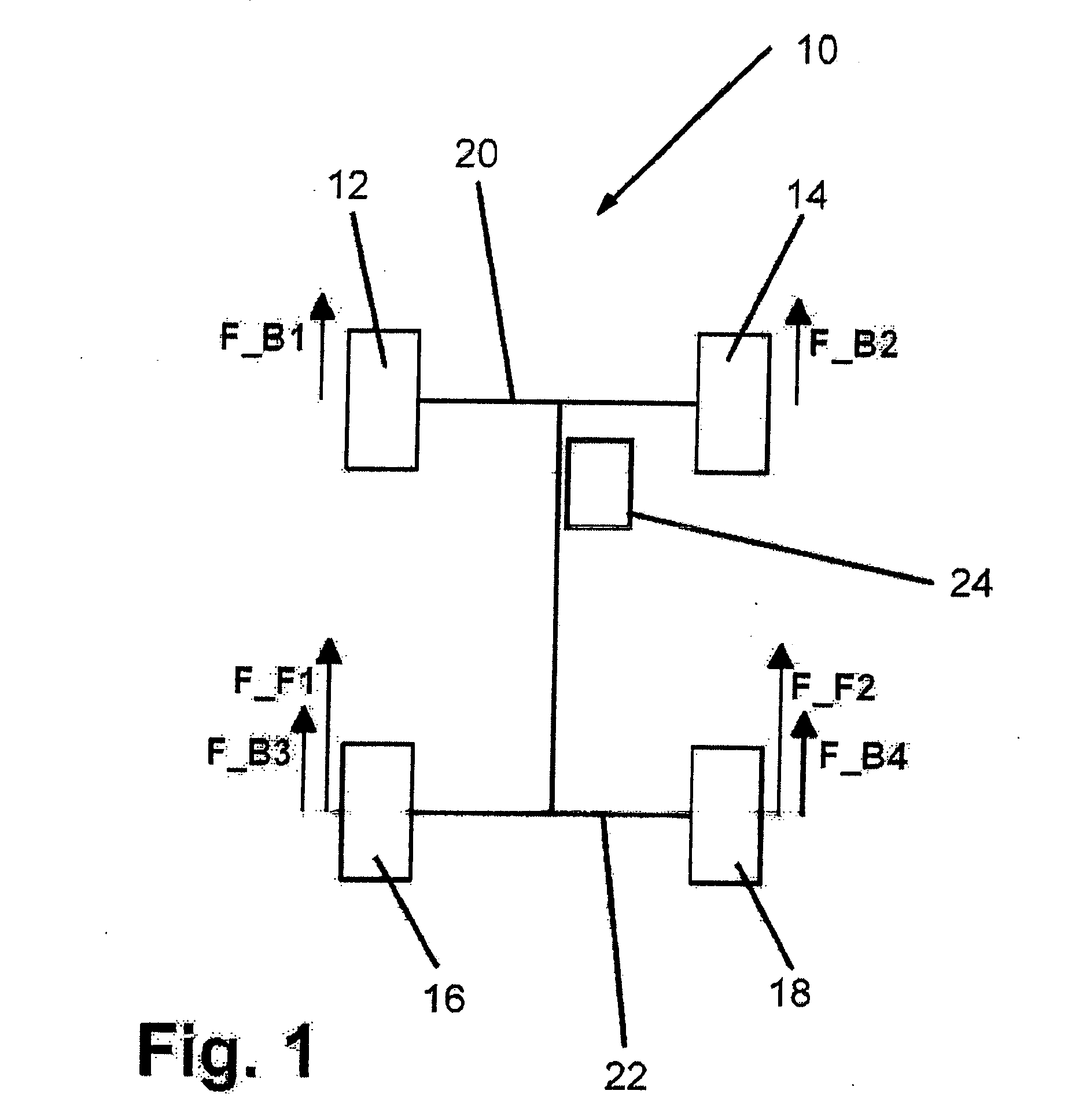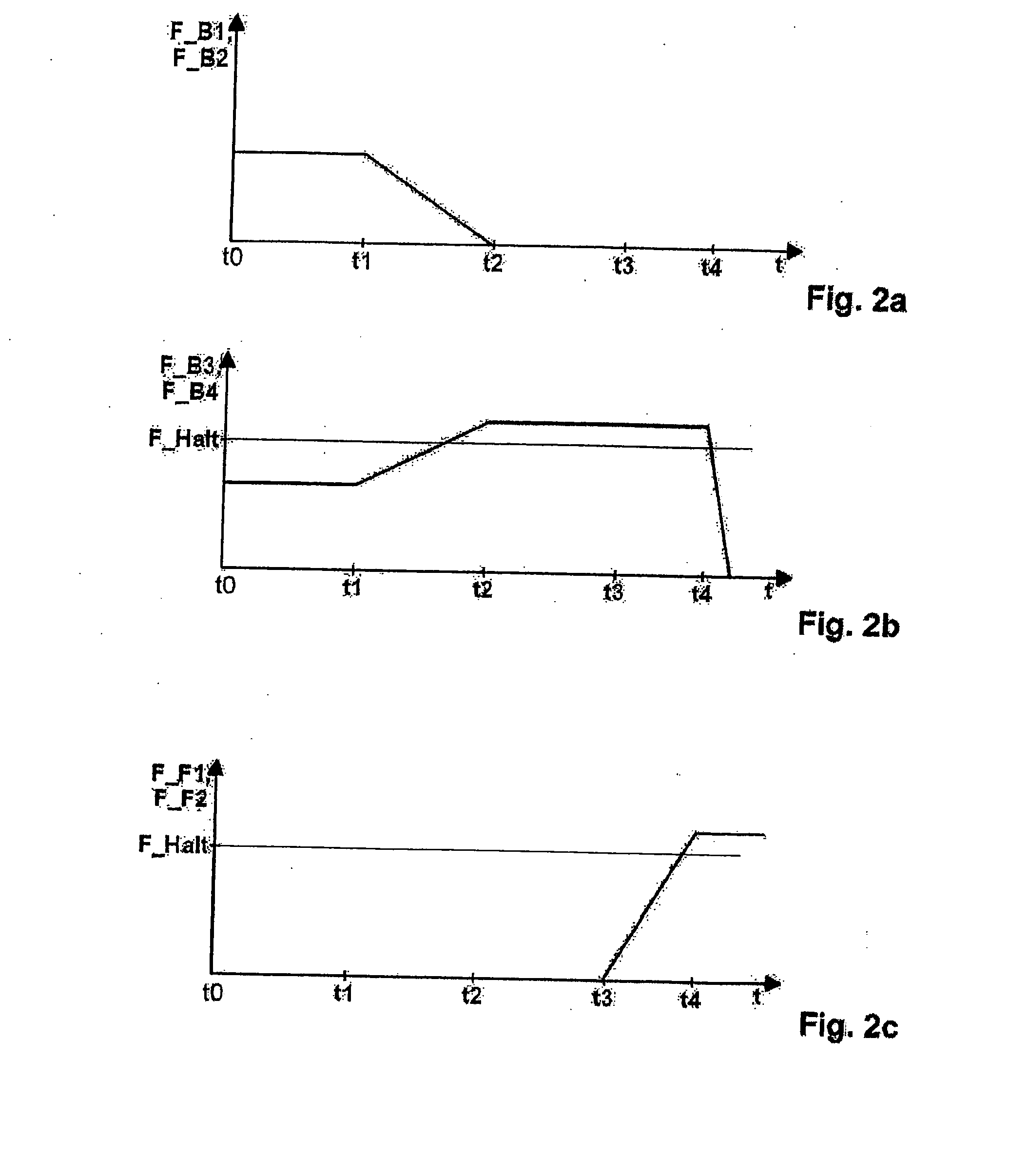Method for stabilizing a motor vehicle whose speed is reduced to a rest position and brake system for carrying out said method
- Summary
- Abstract
- Description
- Claims
- Application Information
AI Technical Summary
Benefits of technology
Problems solved by technology
Method used
Image
Examples
Embodiment Construction
[0018]FIG. 1 shows a schematically represented motor vehicle which is generally designated by 10. This comprises four wheels, namely the two front wheels 12 and 14 and the two rear wheels 16 and 18.
[0019] The two front wheels 12 and 14 are coupled via a front axle 20, while the two rear wheels are coupled via a rear axle 22. A service brake, the control of which is generally designated by 24, acts on all four wheels 12, 14, 16 and 18. In the service brake mode the service braking force F_B1 acts on the front wheel 12, the serving braking force F_B2 on the front wheel 14, the service braking force F_B3 on the rear wheel 16 and the service braking force F_B4 on the rear wheel 18. However in the parking brake mode, for example when the vehicle has been parked, in the example holding forces only act on the two rear wheels 16 and 18, namely the holding force F_F1 on the rear wheel 16 and the holding force F_F2 on the rear wheel 18. These holding forces are applied by the parking brake. ...
PUM
 Login to View More
Login to View More Abstract
Description
Claims
Application Information
 Login to View More
Login to View More - R&D
- Intellectual Property
- Life Sciences
- Materials
- Tech Scout
- Unparalleled Data Quality
- Higher Quality Content
- 60% Fewer Hallucinations
Browse by: Latest US Patents, China's latest patents, Technical Efficacy Thesaurus, Application Domain, Technology Topic, Popular Technical Reports.
© 2025 PatSnap. All rights reserved.Legal|Privacy policy|Modern Slavery Act Transparency Statement|Sitemap|About US| Contact US: help@patsnap.com



